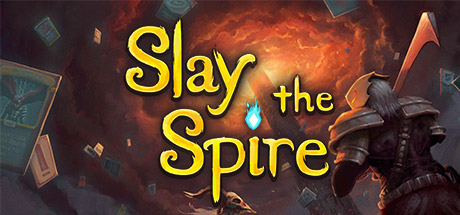From Dominion, to Marvel Legendary, to Paperback, the deck-building genre of tabletop games is one of my favourites. Through the process of building your deck with new cards, you dramatically improve your ability to complete the task at hand, whether it’s to build a kingdom, defeat super villains, or write your next great novel.
In recent times, the deck-building mechanic has melded with video game design in ways that push both forward. For example, SteamWorld Quest is in most respects is a cookie-cutter JRPG. But with deck-building as the foundation for its combat, you get an insane amount of control over how you spec out each character and approach each fight.
Enter Slay the Spire. In many ways, it stays very close to its Roguelike roots. Your goal is to fight through the dungeon and make it out alive in one go. If you die, you have to start the whole thing from the beginning. However, the introduction of deck-building takes it to a fresh and exciting new place.
At the start of each run, you choose which hero to play as. Each character starts with a different set of stats, relics, and cards. These cards represent your actions in combat, such attacks, defense, and status effects. Before you consider the amount of variance that can happen within each run, having four different characters gives you plenty of reasons to climb the tower.
Speaking of which, your goal is to climb to the top of the tower while overcoming all challenges along the way. You’ll fight standard enemies, elites, bosses at the end of each Act, and may get caught in a sticky situation depending on which events you trigger. There are also shops where you can spend your gold on a random assortment of improvements, and rest stops where you can either regenerate some of your health or upgrade a card.
Each Act presents you with a randomly-generated map with winding pathways, giving you some control over how you proceed. Though I wasn’t the most thoughtful when it came to planning, I liked having some control over my movements. For example, I may avoid pathways where shops appear early on, as I may not have enough money to buy anything. Meanwhile, I may go out of my way to fight an Elite adversary in hopes of defeating them and taking their Relic. Relics are powerful items that can give you permanent boosts or limited-use benefits that are incredible when active.
When it’s time to battle, you’ll use your cards to vanquish your opposition. During each round of combat, you’ll draw five cards from your deck and make the best of what you have in hand. As you burn through cards, they’ll go into a discard pile. Once you’ve exhausted your whole deck, your cards will all be shuffled back into a draw pile.
Since you won’t have access to your full deck within each round, it’s on you to make the best of what you have in your hand. Though it might seem limiting and overly random, having this restriction in play adds a lot of excitement to combat. Not fight plays out the same way and you really have to be mindful of how you approach every turn.
Furthermore, there’s actually many ways of not only mitigating the game’s inherent randomness, but using it to your advantage. The game presents you with numerous opportunities to add stronger cards to your deck. Not only that, but there are moments where you can remove cards from your deck as well. Doing so will allow you to remove Curses or weak starter cards from your deck, allowing you to get to your good cards faster. You can even tweak your deck in certain ways to increase the chances of creating devastating combos or establishing stifling defense in order to weather incoming onslaughts.
Every aspect of the journey is exciting. The moment-to-moment combat is tense. Choosing which direction to go can really impact the trajectory of your story. Even the process of item management will constantly press you to make choices that can make-or-break you in future battles.
Even in death (which will occur constantly), your efforts won’t be in vain. Each run will add XP to your overall character. After achieving each level, you’ll unlock a new set of powerful cards that may appear in future runs. At the start of each successive run, you’ll also get to choose a perk from a random set to make the coming climb a bit easier.
Once you beat the game with a single character, there are still three more characters to climb with. Each one has its own attributes and cards, making for a unique challenge. From there, you can try and unlock the mysterious Act 4. And beyond that, the game serves up daily challenges and a custom mode that allows you to tweak the challenge in a dizzying number of ways.
The hybrid of deck-building and Roguelike elements make Slay the Spire a delicious blend of both. Every run feels like a grandiose adventure where every decision matters. Even though a number of its mechanisms are rooted in randomness, you as the player are still given so much control to approach each run however you want. To top it off, there are so many reasons to keep coming back, from different characters to master, to daily challenges, to custom runs that let you tweak everything just the way you want. Whether you’re an experienced deck-builder, Roguelike enthusiast, or have no prior experience with any of its source material, Slay the Spire earns my highest recommendation.
 Buy Slay the Spire Now From Amazon.com
Buy Slay the Spire Now From Amazon.com
[Purchasing through this Amazon affiliate link gives me a small commission without adding any extra cost or effort to you. Thanks for your support!]




